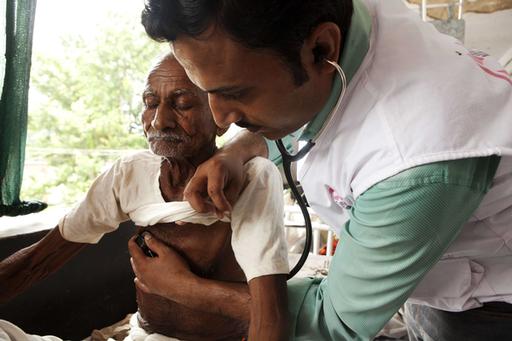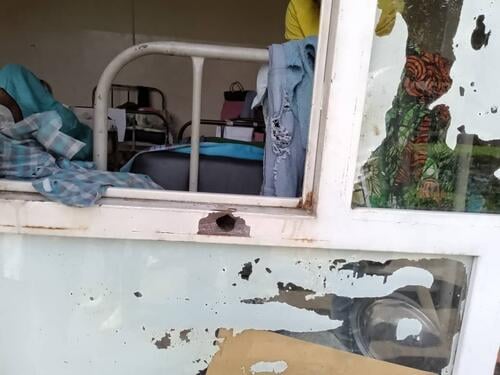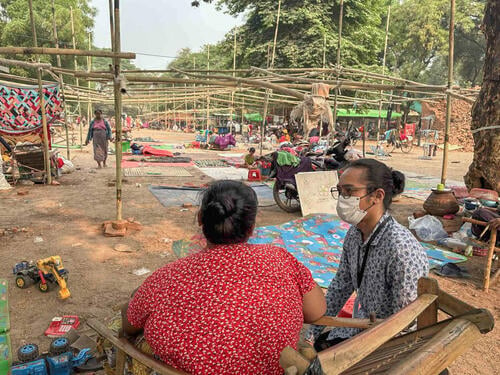Despite affecting millions and killing tens of thousands each year, visceral leishmaniasis, sleeping sickness and Chagas disease garner little attention from drug developers, policy makers, or the mass media.
There are, at this very moment, hundreds of thousands of people who need a very specific kind of help. We know where they are likely to be found. We know what they need. The resources and the expertise to help them do exist. But in too many cases, they are neglected, and this neglect can be fatal.
There are 17 diseases that have been classified as neglected tropical diseases, or NTDs. They are, as the report that follows says, a collection of infections that tend to prey on the impoverished and nearly always take profound physical, medical, and economic tolls on their hosts and their families. It’s been estimated that more than half a million people die from NTDs each year.
And yet most of these NTDs are neglected still. It has been far too long.
For the past 25 years, Doctors Without Borders/Médecins Sans Frontières (MSF) has been working with a special focus on three life-threatening NTDs: Kala azar (or visceral leishmaniasis), and sleeping sickness (or Human African trypanosomiasis), which are both always fatal if left untreated; and Chagas Disease, which can lead to fatal complications. Despite affecting millions and killing tens of thousands each year, these diseases garner little attention from drug developers, policy makers, or the mass media. MSF is publishing this report as part of its ongoing effort to show what these diseases are doing to people who live far from the public eye—and who, because of poverty and isolation, have no voice of their own. It is our hope that this report will illuminate the main issues facing the treatment and control of these diseases, that it will convey MSF’s experience working with them, and that it will, ultimately, help spur the sort of research and development that can have a tremendous impact on the lives of those afflicted.
I have been part of MSF’s sleeping sickness programs in Angola and the Republic of Congo, countries shaped by the conditions in which the disease thrives: conflict, poverty, mass movements of populations, and little in the way of an effective health care system. In many ways, the experience was indicative of the themes addressed in this report. A decade ago, the best drug available to treat sleeping sickness was so toxic that it killed 5% of the people who took it. Because of a dearth of available diagnostic options, performing a painful and invasive Foreword Despite affecting millions and killing tens of thousands each year, visceral leishmaniasis, sleeping sickness and Chagas disease garner little attention from drug developers, policy makers, or the mass media. lumbar puncture was then, and still is today, the only way to ascertain the stage the disease was in. Though the number of patients was substantial, those patients were poor, meaning pharmaceutical companies felt there was no profitable market in designing new drugs and diagnostics for their care. And national governments and donor countries alike did little to push an agenda that could lead to greater research and development on their behalf.
There have, nonetheless, been advancements in sleeping sickness treatment, much of it spurred by research that has involved MSF working with other organisations, in particular the Drugs for Neglected Disease initiative (DNDi), which MSF helped found. But even the recent new drug combination has its drawbacks.
Organizations such as the Gates Foundation and some governments recently pledged more resources to NTD control, which is a very welcome development. But there remains an urgent need for additional, sustainable, and sustainably funded treatment programs that also cover life-threatening sleeping sickness, Chagas, and kala azar, in addition to the other NTDs. And there is room for national governments in disease endemic countries to take greater responsibility for their own efforts and a much greater role in setting the agenda going forward.
It is not an easy road ahead. The challenges are many. To cite just one: patients are hard to reach because many live in isolated or insecure environments, so screening is incomplete, surveillance is shoddy, and follow up care is limited. But having been so deeply involved with MSF’s sleeping sickness program, and knowing what I do about MSF’s commitment to the people who suffer from three of the deadliest NTDs, I also know what is possible. If the will is there, if the effort and resources are put forth, lives will be saved. People will be treated and cured and will go on to live healthy and productive lives. If these diseases are no longer neglected, they will not be nearly as fatal.
Dr. Unni Karunakara
International President
Médecins Sans Frontières/Doctors without Borders
Geneva, Switzerland





